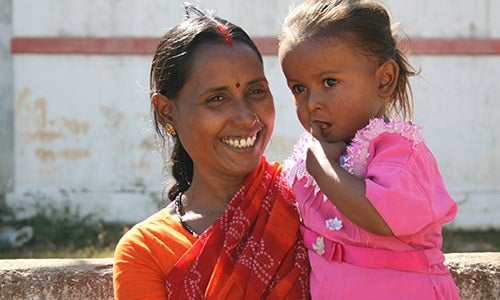Secondary Outcomes of Male Involvement in Family Planning Interventions
We look forward to welcoming Dominick Shattuck to IRH in June as a Senior Research Officer!
[Originally posted on K4Health’s blog here]
Over the last 30 years, the focus of most family planning interventions has been on the female user rather than the couple. In the mid-1990s, however, family planning programmers began to recognize the need to address household power dynamics and roles, which often limit women’s agency over their reproductive health.
And more recently, a wave of interventions focusing on men’s role in contraceptive decision-making have been developed, tested, modified, and re-administered in new areas of the world.
We define the goals of male involvement interventions as:
- Couples’ shared contraceptive decision-making, as a result of men’s increased knowledge of and discussion about contraception with their partners; and
- Men’s support for the acquisition of contraceptive methods through emotional support or allocation of resources (time, money, transportation), and increases willingness to use male-contraceptive methods when available.
The interventions are often labeled “male involvement,” but they can have other names as well and encompass a variety of activities. Overall, they seek to increase contraceptive use through three secondary goals:
- Challenging negative gender norms
- Increasing men’s knowledge and acceptance of contraceptive methods
- Improving communication between men and their partners about family planning
The impact of these interventions on contraceptive uptake has varied, but, interestingly, we have found that secondary outcomes of the interventions are equally, if not more, important for the couple’s future reproductive and relationship health.

Communication is central to our definition of male involvement. Male involvement interventions often facilitate role-play and other activities that help men practice conversations about reproductive decision-making. For many men, the ideal number of children and how to space them out has never been a discussion they’ve had with anyone, let alone their wives.
When men go to the doctor for any sort of care, family planning is rarely—if ever—brought up. Most clinics where we work are not prepared for men in general, let alone to talk about family planning. Building men’s family planning and reproductive health lexicon is key in helping them discuss these issues with their partners. Thus, male involvement interventions seek to increase men’s understanding of contraceptive methods including both their benefits and challenges.

One man who participated in an intervention near Mangochi, Malawi, said, “Before the educator came to shed more light on this issue, I was doing what I could, basing it on guess work without even talking with my wife. After the educator came, I was able to discuss and communicate with my wife about contraceptives very well.”
Central to men’s involvement in family planning is the need to share these decisions with their partners. Sharing decisions requires individuals to actively listen in conversations, respect the opinion of their partner, and be willing to compromise for the betterment of the couple. These behaviors are often the objectives of intervention activities that challenge typical, normative behaviors for men, women and how they communicate. Additionally, being involved means being supportive and present and championing the actions of your partner, whether in family planning or other activities in the household.
In Jharkhand, India, we found that dynamics between couples changed following a male involvement intervention. Women reported greater agency within their relationship, and their husbands became better listeners and made more decisions in consultation with their wives. Many women also reported that men became more involved in child care.
One wife in Jharkhand shared, “Earlier he would not help too much with the children. Now he helps a lot more. When they have to go to school, he combs their hair, packs their lunches, and organizes their school bags.”
Certainly a man helping with the kids is great and clearly appreciated by his wife. To us, this represents a change in this man’s behavior that can be replicated by his children in the future. This is a transformation in men’s roles and responsibilities in his family, hopefully for years to come.
 Where We Work
Where We Work  Press Room
Press Room  FACT Project
FACT Project  Passages Project
Passages Project  Learning Collaborative
Learning Collaborative  Search All Resources
Search All Resources  Social Norms
Social Norms  Fertility Awareness Methods
Fertility Awareness Methods